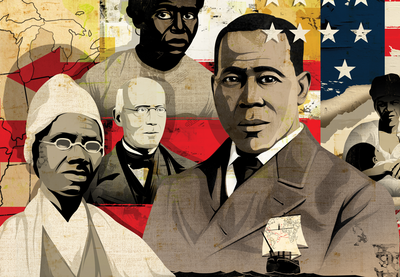Students will know that the main purpose of American slavery was to make money for enslavers.
What Else Should My Students Know?
11.A Labor produces goods and services that can be exchanged for money or other goods and services.
11.B Because enslavers were trying to make money, regardless of their impact on other people, they did not pay the people they enslaved and provided them with only the minimum food, housing and clothing needed to keep them working.
11.C Even free people who did not enslave others benefited from slavery because it kept the prices of goods and services low while building infrastructure and industries.
11.D People were enslaved in different ways depending on place and time. Most enslaved people were in bondage for their entire lives, and many, including all enslaved Africans‚ inherited the condition from their parents.
11.E Enslaved people performed many different kinds of work, depending on age, gender and location‚ and many were highly skilled. Most did not work on plantations. About half of all enslaved people in what is now the United States lived under the same roof as their enslavers and performed hard household work.
How Can I Teach This?
- In capitalist economic systems, all people are producers and consumers. To start, encourage students to identify the ways they consume goods and services, identifying who provides them and where they come from. Who makes the things that they use and wear? Where do those people live? What are their lives like? Who makes money by producing and selling those things? Students can examine the labels on clothing to learn where these goods are produced. Exploring the persistence of contemporary labor exploitation and activism to end conditions such as sweatshop labor will help students to understand the continuing relevance of these discussions.
- Students need to know that slavery was first and primarily an economic institution (or a way to produce goods and services). Enslavers and traders were motivated by prioritizing their own economic gain over the humanity of other people. Historians now understand that while racism was a major rationalization for enslavement, it was not the primary cause.
- As students understand how the work of enslaved people generated profit, they should examine how non-enslaving white people also benefited from slavery. Beginning with the differences between upstanders and bystanders can lead into a discussion about people who don’t say anything when they see injustices taking place and people who do not see injustices in the first place.
- Exploring the economics of the slaving industry will also help students to understand that many jobs were dependent on the slave trade, including work in mills, banking, food production, textiles and the shipping industry. Students should also consider the difficulty of household labor (cooking, cleaning, sewing, raising children, etc.) to understand the economic value that enslaved people added to households in, for example, colonial New England. Field trips to historic sites— even if not directly related to slavery—offer an opportunity to explore the labor needed to maintain households, farms and factories.
- “Runaway slave” ads also show that enslaved people worked different types of jobs and had different skills. Many advertisements are collected online in the Freedom on the Move database.
- By reading the narratives of formerly enslaved people and trade books such as Freedom Over Me: Eleven Slaves, Their Lives and Dreams, students should learn that being assigned a monetary value was a dehumanizing action that did not diminish the actual humanity of the enslaved person.
- Reading excerpts from the accounts collected in the book Growing Up in Slavery will help students to understand the difficult lives of enslaved children.
